DIY Project ~ TheDCH Hypertufa Workshop
Rad McFarlane and Arle Kruckeberg, members of the Delaware Valley Chapter of the North American Rock Garden Society, recently brought their expertise to TheDCH for a hypertufa trough workshop and discussion of the related topic of rock gardening.
Rock gardening is comprised of freely draining sites containing soil that is shale-like: sharp sand, grit, gravel and “rice” stone mixed with humus, compost and peat moss. Inspired by the native plants of the alpine, tundra, steppe and barrens , rock gardens capture those majestic expanses in miniature. Sharing an affinity with other small scale gardening such as bonsai, rock gardens are planted with drought-tolerant nursery plants or from propagation using cuttings or seeds. And because these hypertufa toughs are porous and shallow, they become the perfect rock garden container.
The hypertufa recipe is based on ratios: make a lot or make a little depending on the size of the container you decide on as a mold. According to Rad and Arle, the best way to gauge how much is just to experiment with the medium. There are also many recipe variations that you can try, easily found on-line. But for this workshop our recipe was as follows:
Hypertufa Trough Recipe
- 1 part ~ Portland Cement
- 1 to 1 and 1/2 parts ~ Peat Moss
- 1 to 1 and 1/2 parts ~ Vermiculite or Perlite
- 1 part ~ Water
So , choose a container (ours was two quarts) and measure accordingly . The steps are illustrated below.
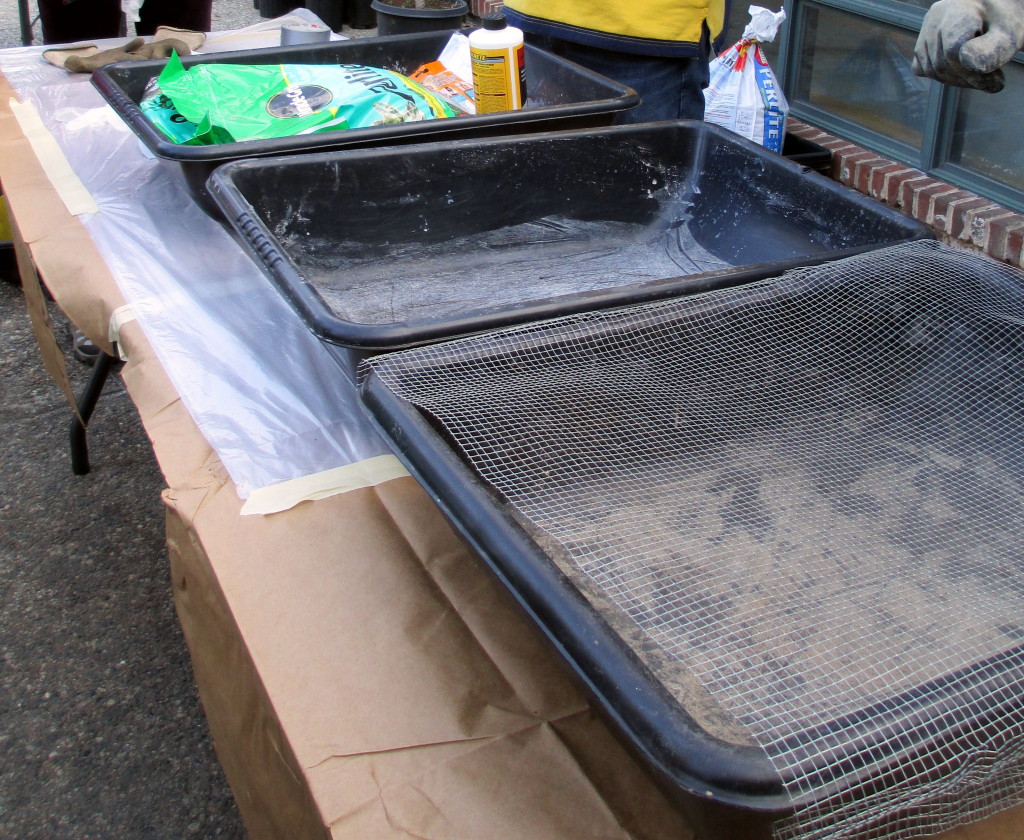
Step # ! ~ Assemble all the materials for mixing outside : a large tub or mortar pan, 1/4 inch hardware cloth,gloves and face mask, acrylic bonding agent, peat moss, perlite or coarse sand, Portland cement, construction fiber
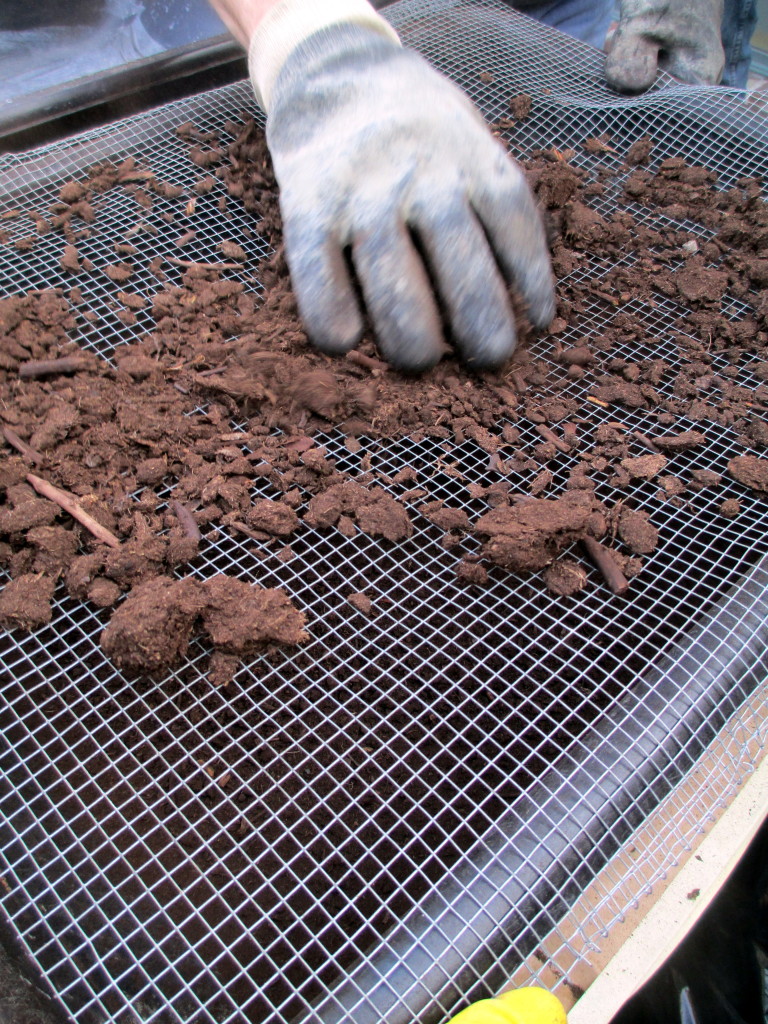
Step # 2~ Sift the peat moss by gently rubbing it across the 1/4 inch hardware cloth. You can do this ahead of time and store it in a trash bag or bucket
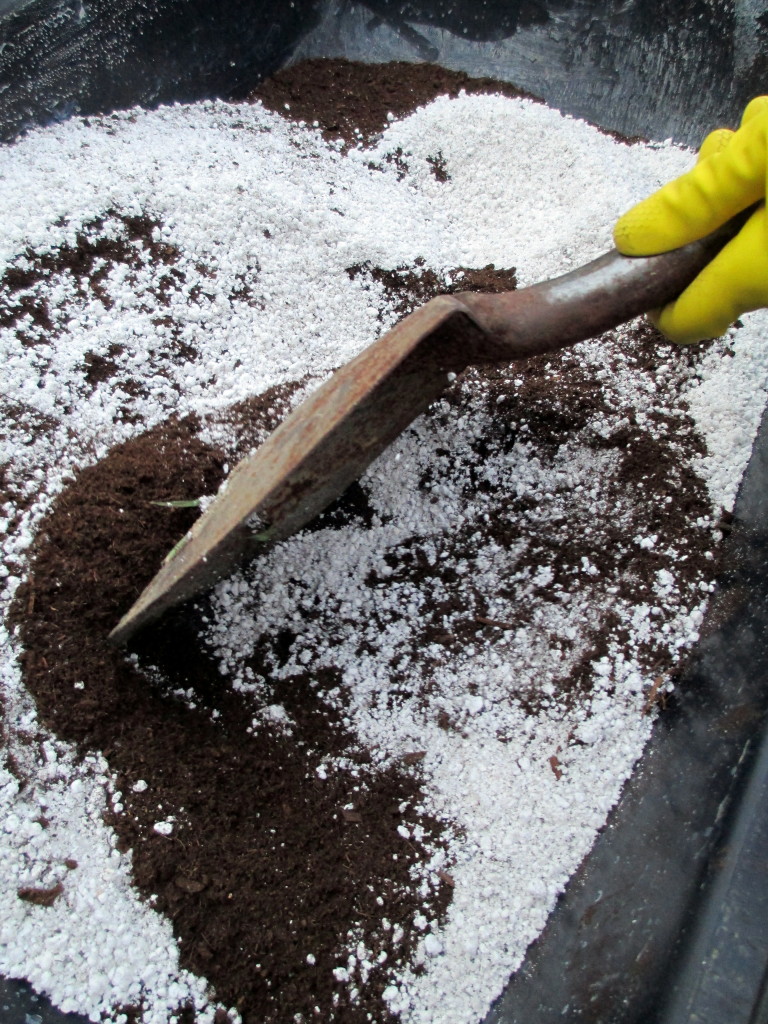
Step # 3 ~ Add the perlite or vermiculite to the sifted peat moss and mix these dry ingredients thoroughly
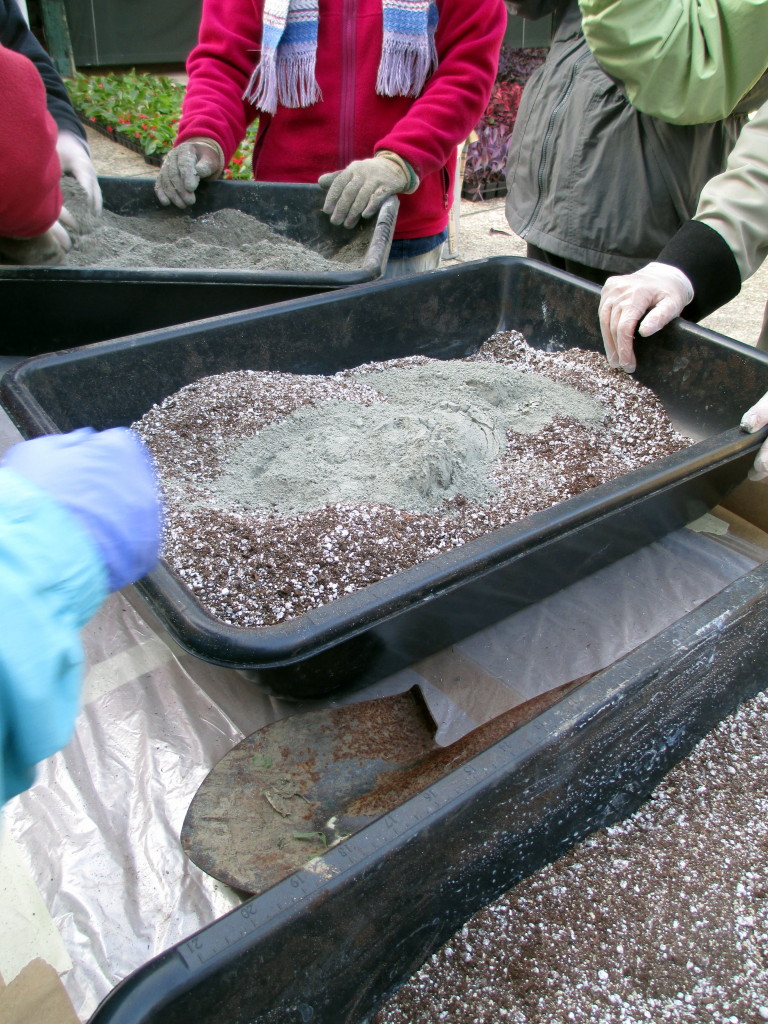
Step # 4 ~ Now add the Portland cement and mix thoroughly again. Then add water and mix again until the consistency of oatmeal. Add in a few liberal splashes of the acrylic bonding agent and a handful of fluffed construction fibers. Mix again.

Step # 5 ~ Your mix should look like oatmeal or cottage cheese. When you squeeze a handful, it should not drip and stay in a ball.
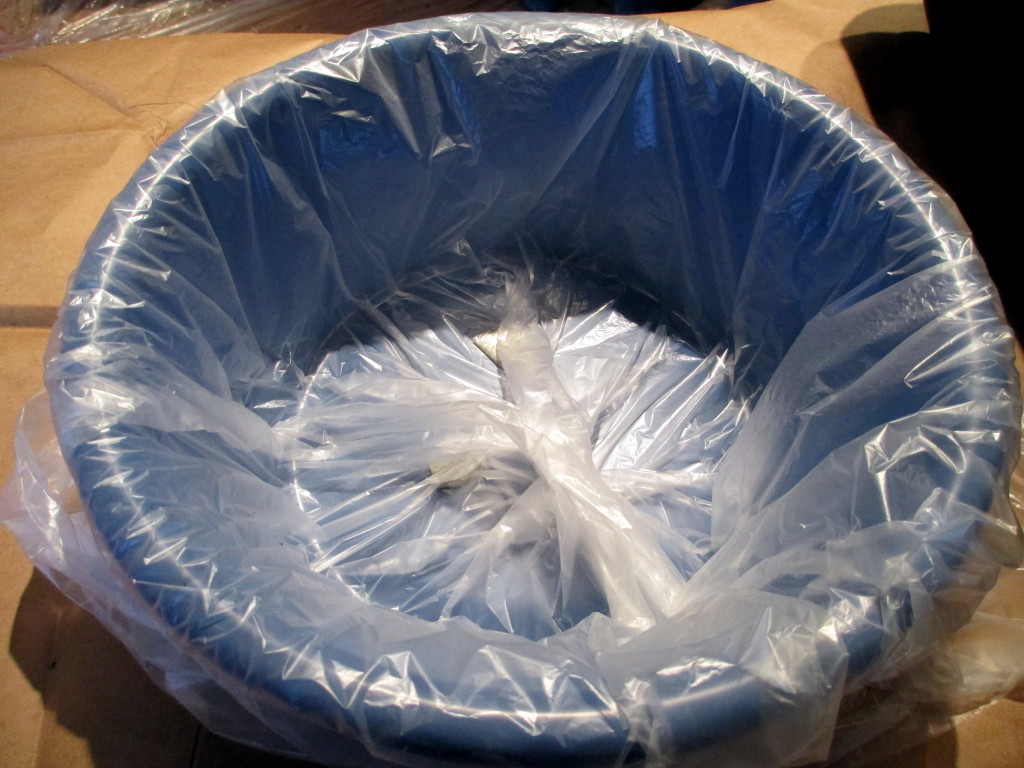
Step # 6 ~ Place the plastic bag bottom in your container and pull the excess plastic over the sides. This will be your mold.
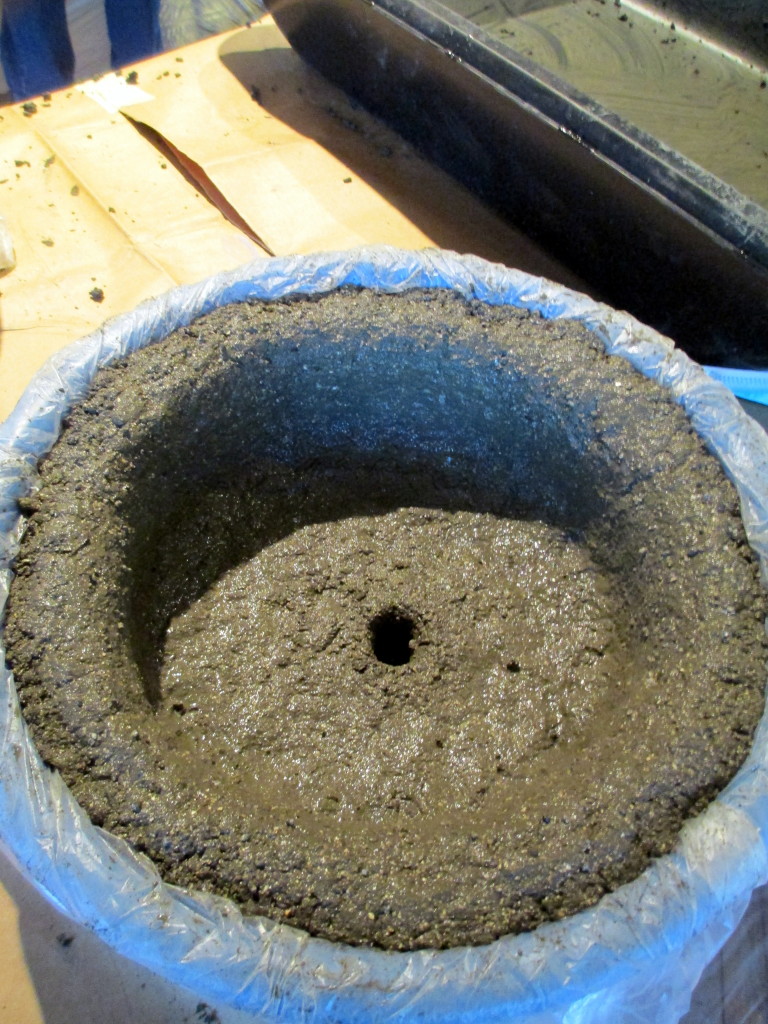
Step # 7 ~ Pat the wet hypertufa mixture firmly onto the bottom and sides of the container. Make a drainage hole in the bottom too!
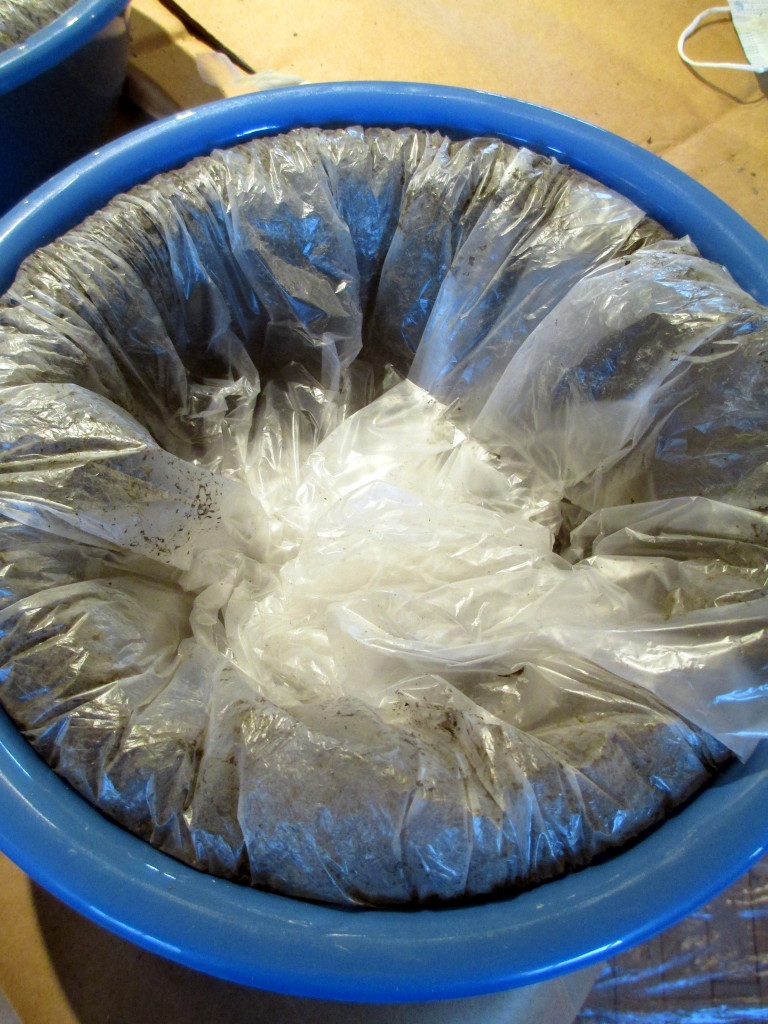
Step # 8 ~ Now cover your pot by folding in the excess plastic bag. Let the pot rest for 2 to 3 days.
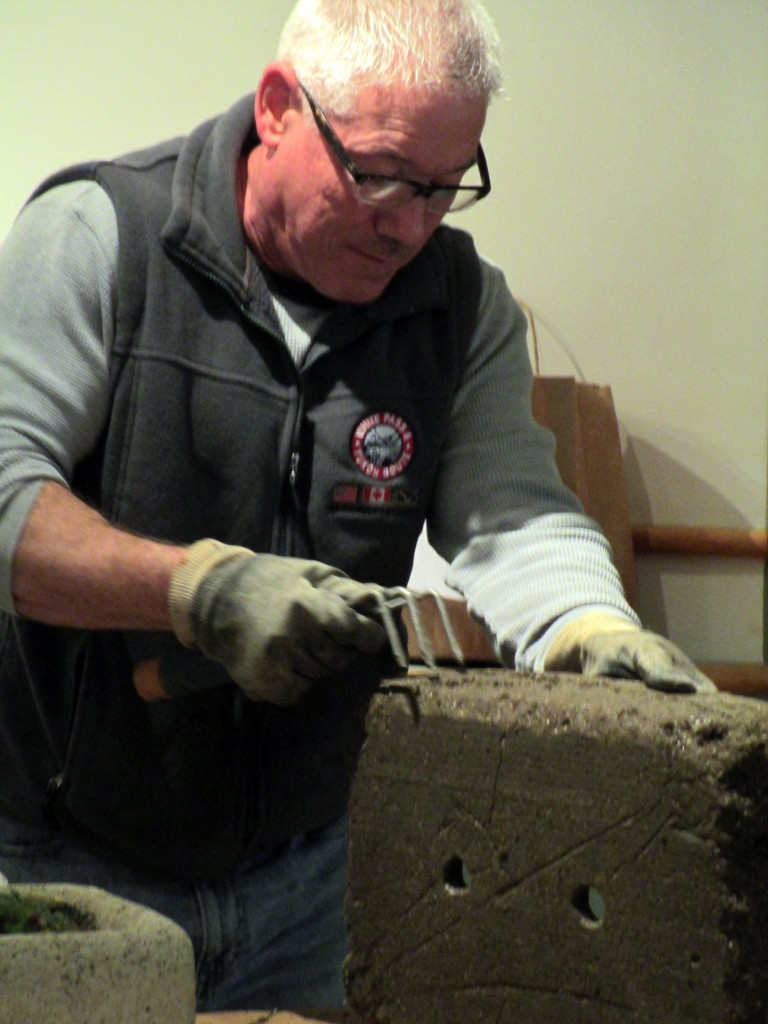
Step # 9 ~ After curing for three days, pop your hypertufa pot out of the mold and rough it up to make it look like natural weathering. Rad demonstrated using garden tools and a wire brush to rough up the edges . Now let your hypertufa pot cure outside in the weather for about a month and plant it with drought-tolerant plants.



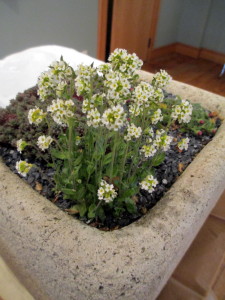
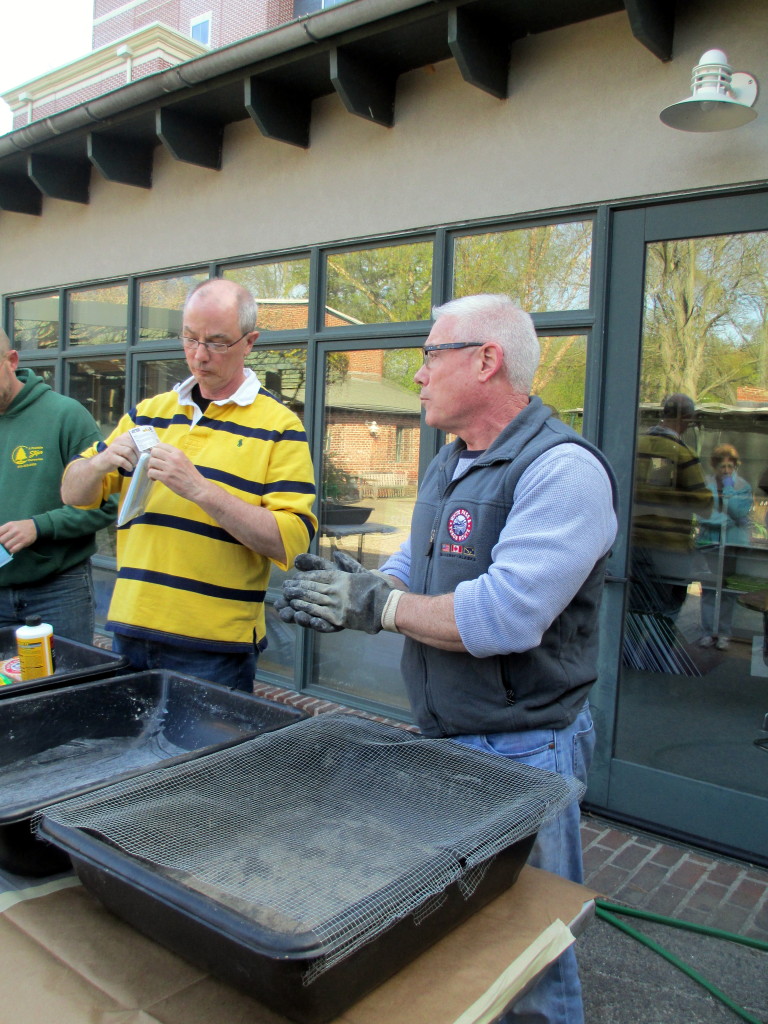






Love this idea!
Great, Teri ! I hope you try it out, it’s a lot of fun making your own pots!
i know this may sound silly, but where do you get acrylic bonding stuff and what are construction fluffed fibers? i want to try this and want to get it right. i have seen other concoctions for tufas but none used these two things. thanks a bunch sweetie! appreciate your reply. charlotte
The materials you asked about are concrete acrylic fortifier by Quickrete (liquid) and concrete reinforcing fiber (pull the threads apart). These aren’t essential to making a hypertufa pot but will help it last much longer, Charlotte!